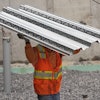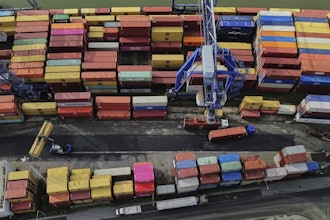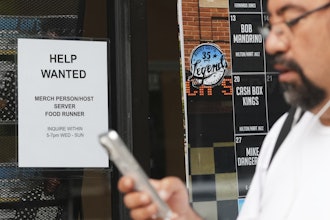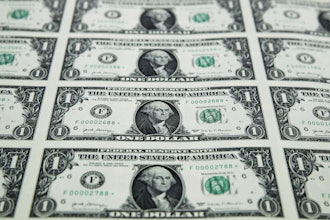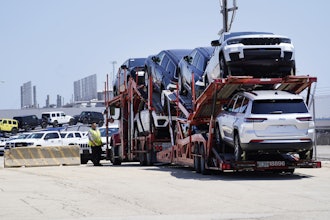
Many businesses posted a strong year of growth in 2021 as government stimulus, changing lifestyles and improved COVID conditions fueled consumer spending. We expect this trend to continue in 2022 as supply chains begin to unclog, domestic production capacity improves and continued investment in technology, infrastructure and efficiency produce broad economic gains.
For the past 16 years Kapitus has funded the growth of small businesses through periods of economic expansion, recession, natural disasters and now a global pandemic. As we look at a new year, we are excited by what we see, but cautious about lingering economic uncertainty. We've drawn from our experience to form the following projections for 2022.
Industries Best Positioned for Growth
Construction: The U.S. construction industry will continue to benefit from the white-collar economy transitioning to remote work, driving demand for home improvements as well as second home purchases. A shortage of affordable housing is also driving demand for new residential construction. In addition, new government spending from the Infrastructure Bill and budget earmarks to encourage energy efficient construction will power additional demand for both residential and commercial projects.
Healthcare: An aging population, new innovations in treatment, a backlog of elective procedures due to pandemic-related disruptions and broader insurance coverage for Americans will combine to drive increased demand for healthcare in 2022. While staffing shortages and burnout are serious problems facing the industry, healthcare professionals are poised for growth in the coming year.
Manufacturing: Stretched and unreliable supply chains have forced retailers and wholesalers to look for more dependable manufacturing partners closer to home. This trend will continue in 2022 as domestic manufacturing incentives in the Infrastructure Bill kick in and investments in factory automation will make U.S. manufacturing more cost competitive in the long run versus lower-cost labor markets overseas. The result will be continued repatriation of manufacturing to the U.S. and our North American neighbors.
Automotive: A surge in demand for automobiles, coupled with supply chain disruptions for new auto parts, has created a shortage of new cars and trucks. As a result, many consumers have been priced out of the new car market and are buying used cars or are driving their existing cars longer. This means older cars on the road are in need of greater repair. Everyone in the auto supply chain will benefit from this environment in 2022 - from the auto manufacturer to the new or used car seller, to the local auto technician.
What About the Economy?
Inflation: The U.S. inflation rate surged in 2021 led by the energy and automotive sectors. Other raw materials also surged during the summer months but then cooled as supply chain issues began to improve. While we expect inflation to remain higher in 2022 than the recent historical average, we believe that planned Federal Reserve rate hikes, increased investments in energy production and repairs to the supply chain will combine to cool inflation in the latter half of the year. Lower inflation is generally preferable for small businesses which struggle to pass on higher costs of goods and labor to their customers without negatively impacting demand.
Supply Chain Normalization: We expect disruptions in the supply chain to improve but not fully return to normal in 2022. Lead times will come down for many products, especially those with fewer component parts and those manufactures in onshore or nearshore locations. However, we expect labor shortages to persist in 2022, causing strains on manufacturing, as well as the trucking and logistics sector.
We also expect backlogs in ports and on cargo ships around the world as pent-up demand continues to outstrip the supply of containers, ships and port-space. COVID spikes in China, which does not have mRNA vaccines and has less heard immunity than most western countries, could exacerbate existing problems in the global supply chain.
Tax Rates: A number of tax changes for 2022 were expected to be enacted through the Build Back Better Act which was passed by the House of Representatives on November 19, 2021. However, the Bill has been unable to move forward in the Senate as it lacks the support of 50 Democratic Senators and has no Republican support. It remains unclear what, if any, tax changes will be passed this year, and if passed, when these changes would go into effect. However, some of the notable tax changes proposed in the Bill are outlined below and, one might expect to eventually see many of these changes enacted once agreement on a new version of the Act can be reached.
- A gradual increase in the minimum tax on foreign profits of U.S. corporations from 10 percent to 12.5 percent in 2023, 15 percent in 2024, and 18 percent after 2024.
- A one percent tax on stock buy-backs of U.S. public companies.
- Expansion of the 3.8 percent Net Investment Income Tax which would now also apply to income from pass-through entities, even if the taxpayer is actively involved in the business.
- A 30 percent investment tax credit to manufacturers who retool, expand or build new facilities that make energy-related products.
- Stronger tax reporting rules for crypto currency exchanges regarding their customers’ earnings.
- Notably, a contemplated corporate income tax increase which would have reversed some of the tax cuts in the Tax Cuts and Jobs Act of 2017, was not included in the Act passed by the House.
Proposed individual tax changes in the Build Back Better Act:
- Increases the limit on the deduction for state and local taxes from $10,000 to $80,000, providing a tax reduction for high earners residing in states with high tax rates.
- Levies a surcharge of five percent on adjusted gross income that exceeds $10 million and an additional three percent on adjusted gross income above $25 million.
The Political Environment
Political polarization has reached an extreme, making bi-partisan legislation extremely difficult. As we enter a mid-term election year, it is hard to see legislation outside of a slimmer version of the Build Back Better Act being passed before a new Congress has been seated in January 2023. In the interim, small businesses should keep an eye on the Federal Reserve to gauge how aggressively it chooses to implement rate hikes - as these actions could have a significant impact on consumer prices and economic growth in the coming year.
The small business economy has proven resilient over the last two years of unprecedented turmoil and change. We expect 2022 will bring a welcome sense of normalization as the virus dissipates, inflation weakens and some supply constraints are resolved. However, many uncertainties remain for America’s small businesses and we have no doubt that the coming year will prove as eventful and potentially more opportunistic than those of recent past.
Ben Johnston is the Chief Operating Officer of Kapitus, which provides growth capital to small businesses. The company offers a number of loan products, including SBA loans, revenue financing, equipment financing, cash-flow based factoring, revolving lines of credit and invoice factoring.

